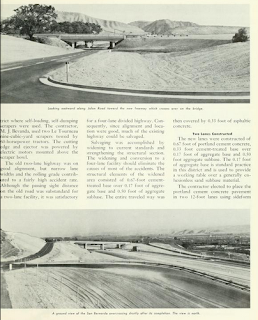Part 1; the history of US Route 101 in San Lucas and San Ardo
Both San Lucas and San Ardo were plotted by the Southern Pacific Railroad in 1886 as siding facilities. San Ardo was originally known as San Bernardo but the community took it's present name upon receiving Post Office Service in 1887. Conversely San Lucas took it's name from the Mexico Rancho San Lucas. Both San Lucas and San Ardo can be seen on the 1890 George F. Cram Railroad Map of California.
The era of State Highway Maintenance through San Lucas and San Ardo would ultimately begin with the 1909 First State Highway Bond Act which was approved by voters in 1910. One of the highways approved through the 1909 First State Highway Bond Act was a 481.8 mile highway originating at the City Limits of San Francisco which terminated in San Diego. This highway would ultimately come to be known in time as Legislative Route Number 2 ("LRN 2").
San Lucas and San Ardo was ultimately part of the American El Camino Real which began being signed as an Auto Trail starting in 1906. Unlike the Spanish El Camino Real which was aligned west of the Salinas River to stay on path to Mission San Antonio de Padua and Mission Nuestra Senora de la Soledad the path of LRN 2 was aligned mostly through the center of Salinas Valley. Early LRN 2 and the American El Camino Real can be seen on what is now Cattleman Road from the outskirts of King City southward to San Ardo on the 1917 California State Automobile Association Map. Notably LRN 2 is shown with a planned rerouting east of the Southern Pacific Railroad which never was constructed.
Originally US 101/LRN 2 headed southbound passed through San Ardo via Railroad Street and Jolon Street. US 101/LRN 2 followed Jolon Street via a bridge over the Salinas River. US 101/LRN 2 was subsequently realigned in 1929 when the present Cattleman Road Bridge was constructed. The December 1929 California Highways & Public Works notes the alignment shift of US 101/LRN 2 in San Ardo due to the construction of the Cattleman Road Bridge.
Subsequently the planned San Lucas-San Ardo freeway upgrade of US 101 appears on the 1966 Division of Highways State Map.
US 101 was upgraded to a freeway between San Lucas-San Ardo during the early 1970s and first appears completed on the 1975 Caltrans State Map.
Part 2; a drive on former US Route 101 on Cattleman Road from San Lucas to San Ardo
Our approach to former US 101/Cattleman Road begins from California State Route 198 westbound entering San Lucas at the Union Pacific Railroad Subway.
CA 198 west intersects Cattleman Road at the southern outskirts of San Lucas.
Cattleman Road follows as a western frontage of the Union Pacific Railroad and Gabilan Range from San Lucas to San Ardo.
Upon entering San Ardo the alignment of Cattleman Road swings west towards the Salinas River.
Cattleman Road crosses the Salinas River via the 1929 Cattleman Road Bridge and meets the current US 101 freeway. The Cattleman Road Bridge is Warren Deck Truss design which is 1,654 feet in length.







































Comments